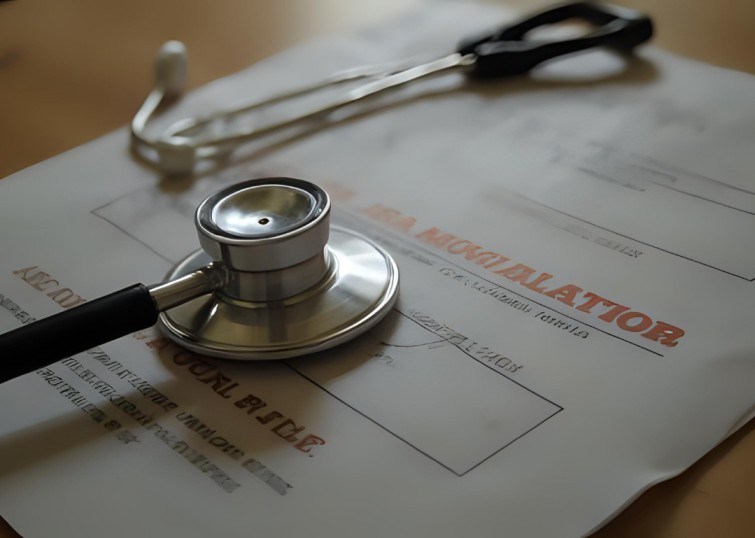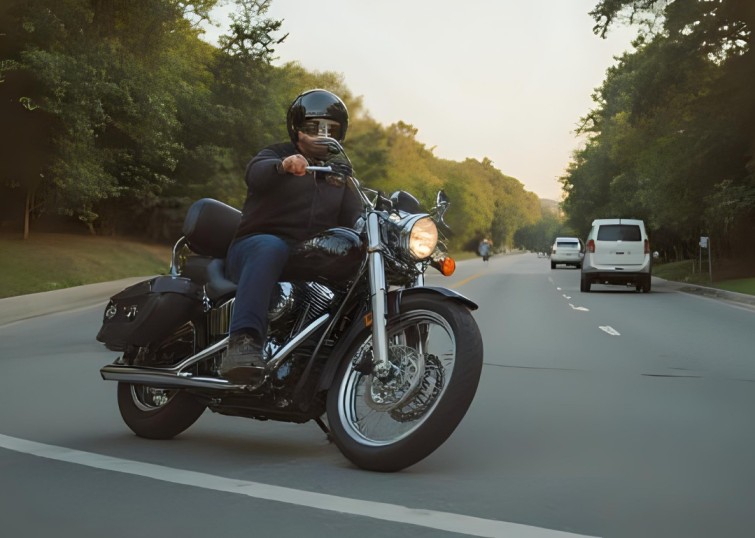TL;DR
To prove the other driver was at fault in an Atlanta motorcycle crash, gather evidence such as photographs, witness statements, and police reports. Understand Georgia’s traffic laws and consult with a legal professional to strengthen your case. Document all damages and injuries meticulously to support your claim.
Key Highlights
- Gather Evidence: Take photos of the accident scene, your motorcycle, and any damages. Collect witness contact information.
- Obtain Police Reports: Ensure a police report is filed and obtain a copy for your records.
- Understand Georgia Laws: Familiarize yourself with relevant Georgia traffic laws that apply to your case.
- Consult a Lawyer: Seek legal advice to navigate the complexities of proving fault.
- Document Damages: Keep detailed records of all medical expenses, repairs, and other related costs.
- Collect Witness Statements: Secure statements from anyone who saw the accident to support your version of events.

Motorcyclists in Atlanta face heightened risks on congested roads like I-20, I-285, and Peachtree Street, where driver inattention, speeding, and unsafe lane changes often lead to catastrophic collisions. According to the Georgia Governor’s Office of Highway Safety, more than 170 motorcyclists were killed statewide in 2023, and a significant portion of those fatalities occurred in Fulton and DeKalb counties. In the aftermath of a serious motorcycle crash, establishing who was at fault becomes the central issue in determining your right to compensation.
Georgia follows a modified comparative negligence system under O.C.G.A. § 51-12-33, meaning if a motorcyclist is found to be 50% or more at fault, they are barred from recovering any damages. Even if the other driver was primarily responsible, insurers often try to shift blame onto the rider to reduce or deny payouts. That’s why proving fault is not just important—it’s legally essential.
This step-by-step guide explains how to legally and factually establish that the other driver was at fault in an Atlanta motorcycle crash, using proven strategies grounded in Georgia law, crash investigation standards, and local court practices.
Step 1: Understand Georgia’s Comparative Negligence Rule
Georgia law holds that each party in a personal injury case may share a percentage of fault. This is codified in O.C.G.A. § 51-12-33, which allows injured parties to recover damages only if they are less than 50% responsible for the accident. If you are found 49% or less at fault, your damages will be reduced by your percentage of fault. If you’re 50% or more responsible, you are barred from any financial recovery.
In the context of a motorcycle crash, this is especially significant because insurers often argue that motorcyclists are reckless or partially to blame simply by virtue of riding a motorcycle. Even if the car driver made a dangerous left turn or ran a red light, the insurer may argue the rider was speeding or lane-splitting. Understanding this legal framework helps you focus on building a strong evidentiary case that clearly puts the majority of fault on the other driver.
Step 2: Obtain and Analyze the Police Report
In Atlanta, police reports are often one of the first official records used to evaluate fault. Whether the report is filed by the Atlanta Police Department, Georgia State Patrol, or another metro agency, it typically includes:
- Diagrams or maps of the accident scene
- Names and contact information of witnesses
- The responding officer’s narrative and observations
- Any citations issued at the scene
If the report states the other driver failed to yield, ran a red light, or made an unsafe turn, it can serve as persuasive evidence in insurance negotiations or court. While police reports are not definitive proof of liability under Georgia law, they often influence adjusters and judges. An experienced atlanta personal injury lawyer will scrutinize the report for inconsistencies or gaps and may follow up with the officer for clarification or testimony.
Step 3: Gather and Preserve Physical and Digital Evidence
Strong physical and digital evidence is essential to proving fault. Georgia law allows both parties to introduce various forms of evidence to support their version of events. For a motorcyclist trying to establish that the other driver was at fault, key evidence may include:
- Photographs of the crash scene: including vehicle damage, debris, skid marks, traffic signs, and lighting conditions
- Dashcam or helmet camera footage: increasingly common and admissible in Georgia courts
- Traffic camera or business surveillance footage: especially helpful on busy Atlanta roads and intersections
- Eyewitness statements: from neutral third parties or other motorists
- Medical records and injury photos: to establish impact severity
Time is of the essence. Atlanta surveillance systems often overwrite footage within days, and witnesses may forget key details. A personal injury attorney can send preservation letters or subpoenas to obtain time-sensitive evidence, especially if the crash occurred near businesses or intersections with city-operated cameras.
Step 4: Use Accident Reconstruction Experts
In complex cases where liability is contested, accident reconstruction experts provide authoritative analysis. These professionals are often engineers or physicists who specialize in:
- Examining skid marks, crash angles, and point of impact
- Reviewing black box data from vehicles
- Creating 3D simulations of the accident
- Identifying mechanical failures or road design issues
In the Atlanta legal system, expert testimony can help clarify disputes where both drivers blame each other. For example, if the other driver claims you were speeding, an expert may be able to calculate your speed based on physics and road evidence, disproving that claim. Courts and insurance companies tend to give significant weight to expert findings, particularly when supported by data and visuals.
Step 5: Investigate the Other Driver’s Behavior and Driving History
Georgia law allows personal injury attorneys to investigate the conduct and driving history of the at-fault party. This step helps show that the other driver acted negligently or violated traffic laws. Your attorney may uncover evidence such as:
- Past driving history including prior crashes or license suspensions
- Phone records showing the driver was texting or on a call
- Toxicology reports indicating drug or alcohol impairment
- Traffic citations or warnings issued at the scene
- Surveillance or dashcam footage showing erratic driving
This type of information may come from depositions, subpoenas, or discovery during litigation. If the other driver has a history of speeding or distracted driving, it strengthens your case and may lead to punitive damages under O.C.G.A. § 51-12-5.1 if gross negligence is proven.
Step 6: Counter Motorcycle Bias in Fault Determination
Motorcyclists often face implicit bias when liability is being evaluated. Insurers and jurors may assume riders are risk-takers, even when they obey traffic laws. This bias can unfairly influence fault assessments. To counteract it, present credible evidence of safe and responsible riding, such as:
- Proof of safety gear usage, like DOT-certified helmets, gloves, and reflective clothing
- Completion of Georgia Motorcycle Safety Program courses
- Absence of traffic violations or prior incidents
- Testimony from credible witnesses attesting to your cautious riding behavior
In court, your attorney may also request voir dire questions to identify biased jurors during jury selection. Demonstrating your commitment to safety helps humanize you and undercut stereotypes that could harm your claim.
Step 7: Work With an Experienced Atlanta Motorcycle Accident Attorney
Navigating fault determination in an Atlanta motorcycle crash requires local legal expertise. A skilled attorney understands:
- Fulton, DeKalb, Clayton, and Gwinnett County court procedures
- Atlanta’s most dangerous intersections and traffic flow patterns
- Local insurance company defense strategies
An attorney will preserve evidence, work with accident reconstructionists, subpoena phone or surveillance records, and negotiate assertively with insurers. They also know how to present your case in court to emphasize the negligence of the other driver and minimize any comparative fault assigned to you. Their goal is to secure the maximum compensation allowed under Georgia law while protecting your legal rights at every stage.
Final Thoughts
Proving fault after a motorcycle crash in Atlanta is about more than telling your side of the story—it’s about presenting hard evidence within the framework of Georgia’s comparative negligence law. If the other driver was at fault, your ability to prove it with police reports, expert analysis, surveillance footage, and credible witness statements can make or break your case.
Because time is critical, take action as soon as possible. Engage a knowledgeable Atlanta personal injury attorney who understands the unique challenges of motorcycle accidents and can fight to ensure you’re not unfairly blamed. The stronger your proof, the better your chances of recovering full compensation under Georgia law.
If you’ve been involved in a motorcycle crash, don’t delay in seeking expert assistance to protect your rights and secure your future.Contact a personal injury attorney today for a free case evaluation and begin your journey toward rightful



